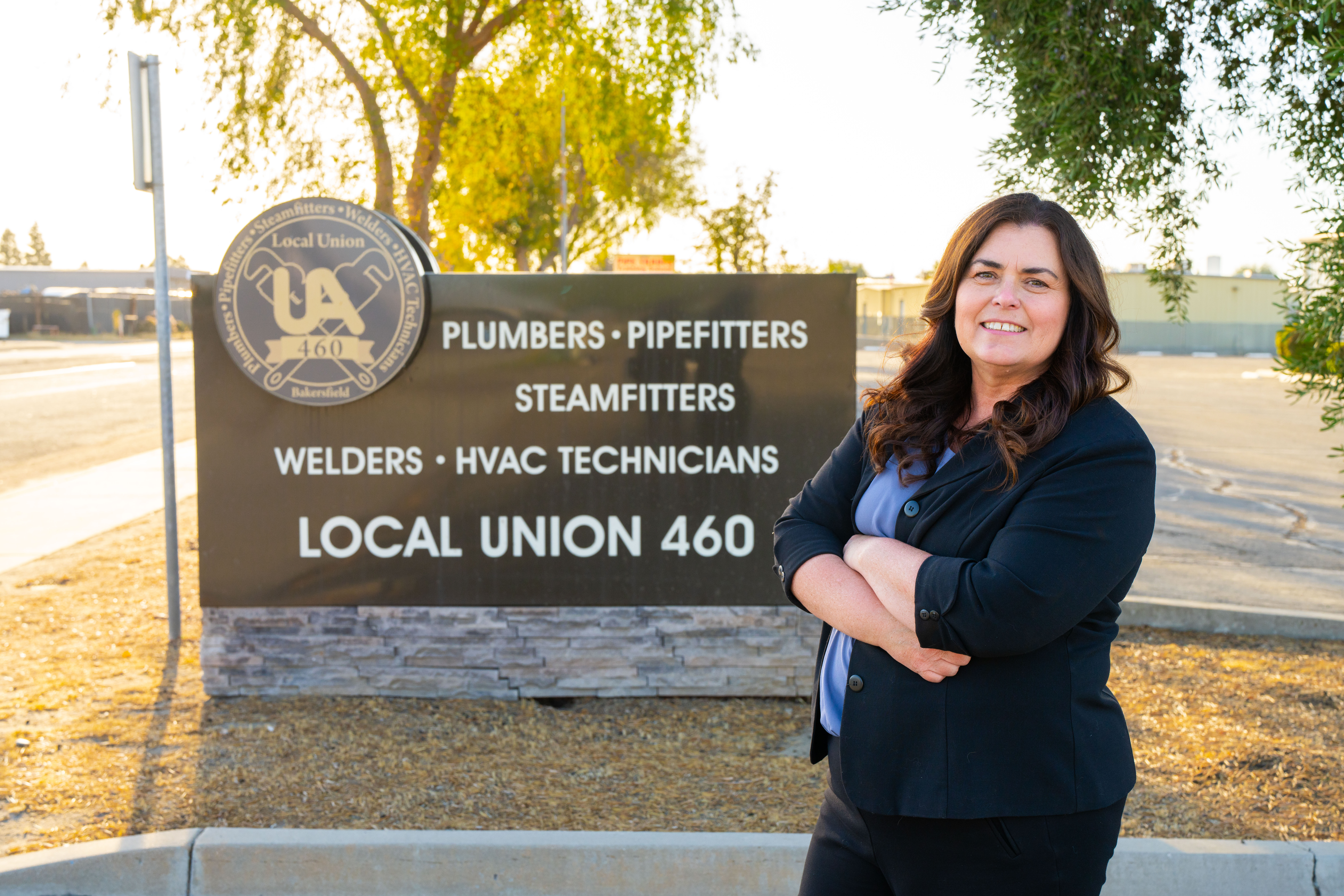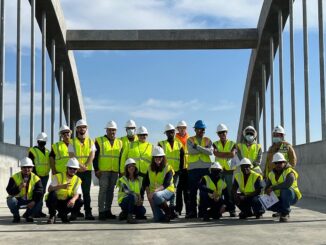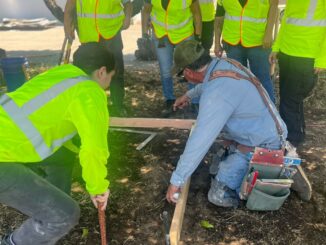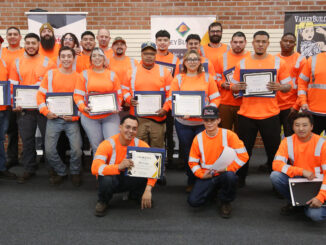
How ValleyBuild prepares workers for union apprenticeship
by Raul Clement
Union construction jobs are highly coveted for their pay, benefits and worker protections. However, the path to joining a construction union may not always be clear to those outside the industry.
“Many folks in the trade unions grew up knowing about them because of a family member,” says Alissa Reed, executive secretary of the Kern, Inyo, and Mono Building and Construction Trades Council. “But that’s not a large percentage of the population. Typically, what we find is that most people have no clue this is a pathway available to them.”
Although a person may know about unions and how they benefit workers, it can be challenging to be accepted in to an apprenticeship program. The process is highly competitive, and some trade unions have entrance exams requiring specific math knowledge. Other trade unions are looking for applicants with some on-site training and/or safety certificates like OSHA 10.
“Union membership is a pathway to the middle class.”
Alissa Reed, Executive secretary of Kern, Inyo, and Mono Building and Construction Trades Council
If you thought that was complicated, there are over a dozen trades, with their own union. Aspiring workers may know they want to work in construction but may not know which trade is best for them or the best way to obtain information for a particular trade.
ValleyBuild’s pre-apprenticeship readiness program can help to fill this information gap. ValleyBuild has apprenticeship readiness programs active across 14 counties in the Central Valley. A collaboration between the Fresno Regional Workforce Development Board and local building and trades councils. ValleyBuild has been helping prepare students for union apprenticeships in construction for over a decade.
The exact details of each ValleyBuild program may differ, but the framework is the same. Over the course of 6 to 10 weeks, a cohort of 15-25 students affords the participants to learn about the various construction trades through both classroom work and hands on training. Each cohort has a math component workshop and participants have an opportunity to improve their interview skills. Each participant that completes the cohort may receive essential certifications like CPR, OSHA 10, HAZMAT, and forklift operation to name a few.
The net result is that they have a leg up, both in terms of knowledge and qualifications. Completing the training can also improve their chances on being accepted into a union apprenticeship, and in many cases they can shine in comparison to other applicants who did not receive this training.
“ValleyBuild participants get certifications that jump off the page,” says Corey Van Rys, secretary-treasurer of the Valley Building and Construction Trades Council. “It shows a prospective employer that this person has invested in themselves. It makes them more valuable than an 18-year-old who has just graduated high school and walks in off the street wanting a job.”
The biggest benefit of ValleyBuild may not be the resume boost, however. It may be how the program helps demystify the pathway to apprenticeship. ValleyBuild participants have an opportunity to meet with affiliates from the various trades during their program. They are able to make connections and learn about the various options available to them in the trades
“Apprenticeship can be nepotistic,” says Chuck Riojas, secretary-treasurer of the Fresno, Madera, Kings, and Tulare Building and Construction Trades Council. “People often need an introduction. And so what we’ve been doing the last decade is trying to get the word out and expose the community to what we do. ValleyBuild is a key part of that.”
Ideally, union work should be available to all but in many cases that is not true. A large part of its appeal is how it can change the fortunes of those without high-paying job prospects.
“The entry barriers are lower than they might be with other careers,” says Reed. “For example, we’re open to justice-impacted individuals or people that don’t have a lot of work experience or formal education past high school.”
What is unique about this program, is the marginalized communities who typically could not take advantage of opportunities because of lack of information. To that end, ValleyBuild partners with high schools, probation departments, and the community-based organizations to recruit interested individuals of all backgrounds, which also includes those who may be justice involved. Another group of individuals who are often shut out of the trades are women. ValleyBuild NOW, is an all-female cohort designed to bridge the gender gap in construction.
Whatever a participant’s background, ValleyBuild helps pave the way for a better life.
“We feel very strongly that the unionized construction industry is the best way for workers not to be taken advantage of,” says Van Rys. “You can have a very successful career through a union. Your job is not tied to one employer. You can ride the peak of the wave. And you’re always contributing to your retirement and your healthcare, because everything is tied to the union.”
Reed echoes the sentiment. “Union membership is a pathway to the middle class,” she says. “It allows people to support a family. It sets them up for success.”
For more information about ValleyBuild’s programs, visit them online at valleybuild.net or call 855-805-7245.



